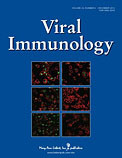Witsø E, Cinek O, Tapia G, Rasmussen T, Stene LC, Rønningen KS. Viral Immunol. 2012 Jun;25(3):187–92. doi: 10.1089/vim.2012.0001. IF: 1.996

Department of Paediatrics
Abstract
Enterovirus infections may be involved in the etiology of type 1 diabetes (T1D), which is strongly associated with certain human leukocyte antigen (HLA) class II haplotypes. Our aim was to assess whether HLA genotypes conferring varying degrees of risk for T1D were associated with enterovirus gut infections. From the general Norwegian population, 190 healthy infants at high-risk for T1D (DR4-DQ8/DR3-DQ2), and 383 infants without this genotype were identified. Non-DR4-DQ8/DR3-DQ2 genotypes were further categorized as conferring either an increased-to-moderate risk (DR4-DQ8 or DR3-DQ2), were protective (DQB1*06:02), or were neutral (all other genotypes). A total of 4626 monthly fecal samples taken between age 3 and 12 mo were tested for enterovirus RNA using real-time PCR. Enterovirus prevalence was 11.5% among high-risk children, and 12.2% in other children (adjusted odds ratio: 1.23, p=0.12). The prevalence was 11.3% in those with increased-to-moderate risk, 13.0% in the protective group, and 12.6% in the neutral group (likelihood ratio test, 3 d.f.: p=0.37). In conclusion, there was no statistically significant association between HLA genotype and the occurrence of human enterovirus gut infections.
-mk-
